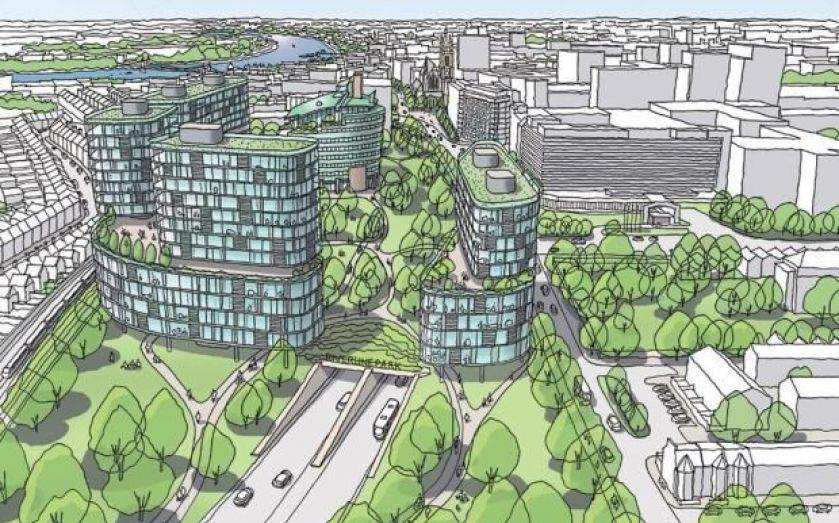Goodbye Jammersmith, hello to Wombling free? Mayor Boris Johnson outlines radical plans to solve capital’s congestion headaches

London mayor Boris Johnson has unveiled plans to reduce congestion and open up more land for housing developments and public space across some of London's busiest hubs.
Five of the capital's biggest traffic pinchpoints – including the A4 in Hammersmith – are going under the knife as part of the plans, which will see spaces opened up for housing redevelopment, public spaces for people to walk or cycle and improve traffic flow.
Barking flyunder (Source: City Hall)
The five proposals include a mini tunnel at the A13 in Barking Riverside, which would free up “a huge amount of land” for future development; decking over the A3 in Tolworth to reduce congestian in connect the area near to the Crossrail 2 station, which will also provide additional land for new homes; and a fly-under at the A316 at Chalkers Corner, easing congestion and “radically improving” routes for cyclists and pedestrians.
Hammersmith flyunder: Headaches like the 2011 "Jammersmith" nightmare could be a thing of the past (Source: City Hall)
They also include a fly-under at the A4 in Hammersmith, replacing the existing viaduct with a new tunnel, creating new opportunities for development and open space and introducing decking or a mini-tunnel at the A406 in New Southgate, to “unlock” land for new homes and connect areas around Crossrail 2.
Southgate (Source: City Hall)
These five locations have been put forward for further feasibility testing by Transport for London after the mayor and his team considered more than 70 sites across the capital.
According to the Evening Standard, Johnson is also considering introducing a toll of £2 a car to fund the developments.
City Hall said funding would “require new and innovative approaches that enable the positive benefits of each scheme to be captured, including the value generated from new development sites in these areas”.
Tolworth (Source: City Hall)
Johnson unveiled the plans today as he visited Boston's state of the art underground highway called the Big Dig tunnel.
He said:“Rebuilding some of our complex and aging road network underneath our city would not only provide additional capacity for traffic, but it would also unlock surface space and reduce the impact of noise and pollution.
“I am inspired by what the ambitious people of Boston have achieved here at the Big Dig, both in terms of reducing congestion and how they have dramatically improved the quality of life on the surface. In London we face similar challenges on our roads, but this could also be a fantastic opportunity to better shape our city and support economic growth.”
TfL will now work with local boroughs to progress these proposals further, including working up more detailed costs and possible funding options and an indicative programme of delivery if funding can be secured. This further analysis will be presented to the Mayor in May.



